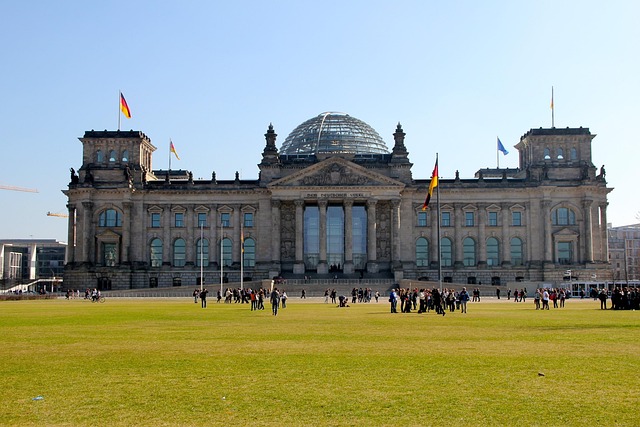Subsidies in Agriculture: Feeding the Future Sustainably
The world of agriculture stands at a crucial junction as it seeks to feed a growing global population while addressing environmental challenges. At the heart of this challenge lies the concept of subsidies—an essential mechanism used by governments across the globe to support and regulate agricultural production. This article delves into the multifaceted role of subsidies in agriculture, exploring their implications for food security, sustainability, and the future of farming practices.
The Evolution of Agricultural Subsidies
Agricultural subsidies can be traced back to the early 20th century, initially pioneered in Europe and North America in response to various economic and social challenges. Governments saw the importance of stabilizing farmers’ incomes during times of crisis, such as the Great Depression. Over the decades, the rationale for subsidies has expanded to address issues of food security, rural development, and environmental sustainability.
Subsidies appear in various forms, including direct payments to farmers, price supports, tax breaks, and grants for specific agricultural practices. These financial aids are often designed to incentivize production, stabilize market prices, and sometimes to promote environmentally friendly practices. However, the strategic use of subsidies varies widely from one country to another, influenced by economic conditions, political climates, and cultural values.
The Importance of Subsidies in Food Security
As global populations continue to rise, food security remains an urgent concern. The role of subsidies in bolstering food security cannot be underestimated. By providing farmers with financial support, governments enable them to produce more food, ensuring adequate supplies for domestic and international markets. This is particularly significant in developing countries, where the agricultural sector often forms the backbone of the economy.
In regions facing chronic food shortages, subsidies can empower smallholder farmers to increase their yields, thereby enhancing household nutrition and economic stability. For instance, by subsidizing essential inputs such as fertilizer and seeds, governments can make it feasible for farmers to enhance their production capacity. This support can be particularly transformative in times of crisis, such as during natural disasters or economic downturns.
Environmental Implications of Agricultural Subsidies
While the primary goal of subsidies is often to bolster food security, their environmental implications are a growing area of concern. Traditional subsidy programs have often incentivized practices that are detrimental to the environment, such as monoculture and excessive use of chemical fertilizers and pesticides. These practices can lead to soil degradation, loss of biodiversity, and water pollution. As such, there is an increasingly urgent need to align agricultural subsidies with sustainable practices that protect ecosystems and promote biodiversity.
Recognizing this challenge, many governments are re-evaluating their subsidy programs. The concept of “green subsidies” has emerged, aimed at incentivizing farmers to adopt sustainable agricultural practices. These may include organic farming, agroforestry, and conservation tillage techniques. By providing financial support for these practices, governments can encourage farmers to transition towards more sustainable models of agriculture that are better suited to the long-term health of the planet.
International Perspectives on Agricultural Subsidies
The global landscape of agricultural subsidies is diverse, with each country adopting distinct approaches based on its socio-economic context. In the United States, for example, agricultural subsidies have historically favored large-scale producers of staple crops such as corn, soybeans, and cotton. This has led to debates about the fairness of such policies and their impact on smaller farmers and alternative agricultural models.
In contrast, the European Union (EU) has implemented the Common Agricultural Policy (CAP), which aims to support farmers while also promoting sustainability and environmental stewardship. The CAP’s various programs provide a blend of direct payments to farmers while also linking some of these payments to compliance with environmental standards.
In developing nations, the conversation around subsidies is often tied to global trade dynamics and the influences of organizations such as the World Trade Organization (WTO). Many developing countries advocate for more significant subsidies to support their agricultural sectors, arguing that this is necessary for building resilience and ensuring food security in the face of competition from subsidized agricultural exports of developed nations.
The Future of Subsidies in Agriculture
As we look towards the future, the ongoing discussions around agricultural subsidies will inevitably shape the sustainability and resilience of food systems worldwide. The intersection of technological advancements, climate change, and changing consumer preferences presents both challenges and opportunities. Modern agricultural practices, including precision farming, biotechnology, and regenerative agriculture, offer potential pathways to improve efficiency and sustainability in food production.
To enhance sustainability in agriculture, subsidy programs may need to evolve continually. This could include the integration of smart policies that reward farmers for adopting practices that protect the environment or contribute to climate adaptation. Such policies could promote a diversified farm structure instead of monoculture systems, encouraging farmers to cultivate a variety of crops that can mitigate risks associated with pest outbreaks and climate variability.
Conclusion
In conclusion, agricultural subsidies play a pivotal role in shaping food systems across the globe. They hold the potential to enhance food security, empower farmers, and promote sustainable agricultural practices. However, the challenge remains in ensuring that these subsidies are directed towards fostering environmental stewardship and resilience in the face of climate change.
As global populations continue to rise and the pressures on natural resources increase, reevaluating and redesigning subsidy frameworks to prioritize sustainable practices will be crucial. By investing in agricultural systems that are not only productive but also environmentally friendly, we can work towards a future where food security is assured, and ecosystems are preserved for generations to come.










